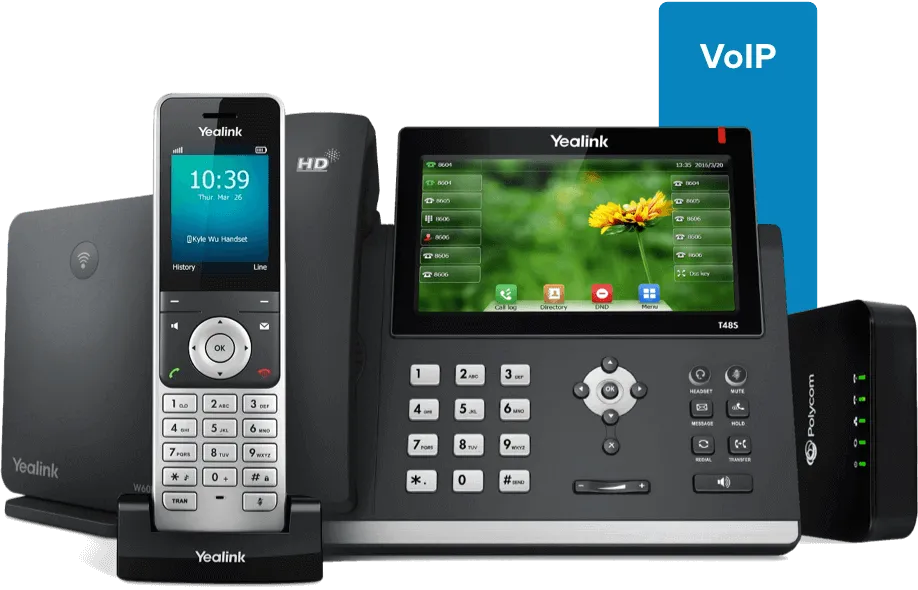Enterprise Telephony
Enterprise telephony refers to the communication systems and technologies that organizations use for voice communication within and outside the enterprise. These systems are designed to handle the communication needs of large-scale businesses and provide a reliable and feature-rich platform for voice-based interactions. Here are key aspects of enterprise telephony:

Private Branch Exchange .
PBX is a telephony system that manages internal and external calls within an organization. It connects internal extensions and routes calls to the appropriate destination
- Purpose: PBX systems facilitate efficient internal communication and provide features such as call forwarding, voicemail, and conferencing
Voice over IP.
- VoIP technology allows voice communication over the internet, converting analog voice signals into digital data for transmission.
- Purpose: VoIP enables cost-effective and scalable voice communication, often integrated with other enterprise communication systems.


Unified Communications .
UC integrates various communication channels, including voice, video, messaging, and collaboration tools, into a unified platform.
Purpose: UC enhances communication and collaboration by providing a seamless experience across different channels, improving productivity and efficiency.
IP Telephony.
- : IP telephony refers to the use of internet protocol (IP) for voice communication, utilizing data networks for transmitting voice packets.
- Purpose: IP telephony is a modern and scalable approach to enterprise telephony, leveraging existing data infrastructure for voice communication.


Call Management Features.
- Enterprise telephony systems offer advanced call management features, including call routing, call queuing, auto-attendants, and interactive voice response (IVR) systems.
- Purpose: These features improve call handling efficiency, enhance customer service, and provide a better overall communication experience.
Integration with Collaboration Tools.
- Integration with collaboration tools, such as instant messaging and video conferencing, allows for a unified communication experience.
- Purpose: Seamless integration with collaboration tools fosters teamwork, enabling employees to communicate using their preferred channels.


